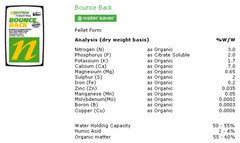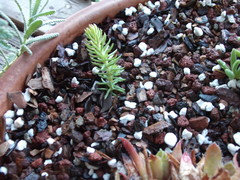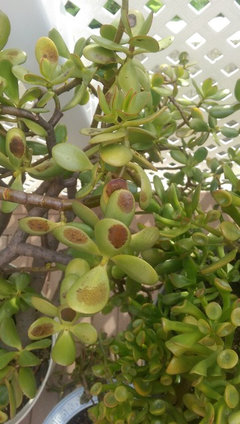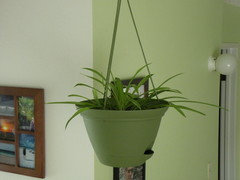succulent soil mix
hdladyblu_2007
16 years ago
Featured Answer
Comments (110)
tapla (mid-Michigan, USDA z5b-6a)
14 years agotride26
14 years agoRelated Professionals
Comstock Park Landscape Architects & Landscape Designers · Wixom Landscape Architects & Landscape Designers · Coram Landscape Contractors · Florham Park Landscape Contractors · Lorain Landscape Contractors · Maple Heights Landscape Contractors · Menifee Solar Energy Systems · Fort Myers Window Contractors · Dayton Window Contractors · Graham Window Contractors · Hutto Window Contractors · Leicester Window Contractors · Guilford Fence Contractors · Huntington Beach Fence Contractors · Marana Fence Contractorstapla (mid-Michigan, USDA z5b-6a)
14 years agotride26
14 years agotapla (mid-Michigan, USDA z5b-6a)
14 years agoshanielynn
14 years agotapla (mid-Michigan, USDA z5b-6a)
14 years agoshanielynn
14 years agotapla (mid-Michigan, USDA z5b-6a)
14 years agoshanielynn
14 years agotapla (mid-Michigan, USDA z5b-6a)
14 years agodanesnpits
10 years agodanesnpits
10 years agoStarlight Botanist
10 years agoSorcie
9 years agogreenman28 NorCal 7b/8a
9 years agoSorcie
9 years agogreenman28 NorCal 7b/8a
9 years agoSorcie
9 years agomeyermike_1micha
9 years agoKat Germain
9 years agogreenman28 NorCal 7b/8a
9 years agoKat Germain
9 years agojamielou
9 years agotapla (mid-Michigan, USDA z5b-6a)
9 years agojamielou
9 years agotapla (mid-Michigan, USDA z5b-6a)
9 years agojamielou
9 years agotapla (mid-Michigan, USDA z5b-6a)
9 years agohalocline
8 years agotapla (mid-Michigan, USDA z5b-6a)
8 years agohalocline
8 years agoJed
8 years agotapla (mid-Michigan, USDA z5b-6a)
8 years agoJed
8 years agohalocline
8 years agotapla (mid-Michigan, USDA z5b-6a)
8 years agohalocline
8 years agodert17
8 years agolast modified: 8 years agoJed
8 years agodert17
8 years agolast modified: 8 years agotapla (mid-Michigan, USDA z5b-6a)
8 years agoJed
8 years agohalocline
8 years agodert17
8 years agolast modified: 8 years agojacquespascal2
7 years agotapla (mid-Michigan, USDA z5b-6a)
7 years agobragu_DSM 5
7 years agolast modified: 7 years agohalocline
7 years ago
Related Stories

CONTAINER GARDENSContainer Gardening Basics: The Dirt on Soil
Learn the types of potting soil available and the best mixes to help your containers thrive
Full Story
GARDENING GUIDESGardening Solutions for Dry, Sandy Soils
Has your desert or beachy site withered your gardening creativity? Try these ideas for a beautiful, easy-care landscape
Full Story
LANDSCAPE DESIGNHow to Shape a Rain Garden and Create the Right Soil for It
Learn how to grade, lay out and amend the soil in your rain garden to support your plants
Full Story
GARDENING GUIDESGardening Solutions for Heavy Clay Soils
What’s a gardener to do with soil that’s easily compacted and has poor drainage? Find out here
Full Story
FARM YOUR YARDHow to Get Good Soil for Your Edible Garden
The nutrients in your soil feed the plants that feed you. Here are tips on getting it right — just in time for planting season
Full Story
GARDENING GUIDESThe Poop Scoop: Enrich Your Soil With Good Old Manure
Get over the ick factor already — this natural super-ingredient for soil has so many benefits, you'll wonder why you ever went chemical
Full Story
GARDENING GUIDESHow to Stop Worrying and Start Loving Clay Soil
Clay has many more benefits than you might imagine
Full Story
GARDENING GUIDESHouzz TV: Make a Worm Bin for Rich Soil and Happy Plants
A worm-powered compost bin that can fit under a sink turns food scraps into a powerful amendment for your garden. Here’s how to make one
Full Story
LANDSCAPE DESIGNFlood-Tolerant Native Trees for Soggy Soil
Swampy sites, floodplains, even standing water ... if you've got a soggy landscape, these trees are for you
Full Story
GARDENING GUIDES10 Solutions for Soggy Soil
If a too-wet garden is raining on your parade, try these water-loving plants and other ideas for handling all of that H2O
Full Story














tapla (mid-Michigan, USDA z5b-6a)